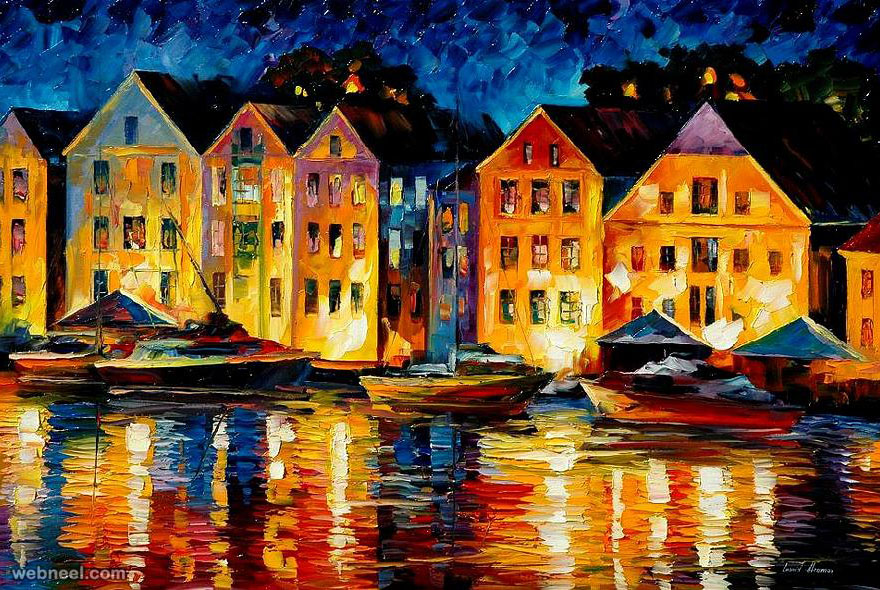The Benefits of Buying Oil Paints: Why They Are a Timeless Investment
The advantages of getting oil paintings expand past plain visual appeals. These art work carry historical importance and cultural value, making them rewarding enhancements to any collection. Their special textures and methods contribute to an interesting visual experience. Well established musicians often see their work value over time, presenting a prospective economic advantage. As one discovers the multifaceted reasons for investing in oil paints, the much deeper ramifications of such a selection come to be increasingly apparent
The Visual Allure of Oil Paintings
The allure of oil paints depends on their abundant appearances and vibrant colors, which can transform any type of area right into an interesting environment. These artworks have a deepness that astounds visitors, drawing them into the complexities of the brushstrokes and the interaction of light and darkness. The shiny coating of oil paint improves the visual experience, enlivening scenes and topics in such a way that various other tools often can not accomplish. Furthermore, the range of styles-- from classical to contemporary-- permits a varied option that can match any kind of décor. The psychological vibration shared through color options and methods adds a layer of connection between the observer and the art work, making oil paints not just decorative items, yet effective expressions of artistic vision.
Historical Significance and Cultural Worth
Oil paints act as important links to an imaginative heritage, showcasing techniques and styles that have actually progressed over centuries. They envelop social expressions and identities, reflecting the worths and stories of their time. By obtaining these works, people contribute to the conservation of history and the recognition of diverse social legacies.
Artistic Heritage Conservation
While lots of may overlook the value of creative heritage, acquiring oil paints plays a vital duty in preserving historic and cultural stories. These art work serve as aesthetic documents of their time, catching the essence of societal values, customs, and historical events. By obtaining oil paintings, enthusiasts contribute to the guarding of social heritages, ensuring that future generations can value and learn from these imaginative expressions. Each item reflects the one-of-a-kind tale of its creator and the context in which it was made. In addition, the continued recognition and display screen of oil paints in different setups assist to promote an understanding of varied imaginative activities, enhancing the cultural landscape. Consequently, investing in oil paintings is not simply an economic decision but an act of cultural stewardship.
Social Expression and Identity
Art acts as a powerful medium for social expression and identification, showing the varied stories that form cultures. Oil paintings, particularly, capture the significance of social heritage, illustrating historical contexts and sociopolitical climates. Each brushstroke shares tales and feelings one-of-a-kind to specific practices, enabling customers to engage with the musician's social history. This connection promotes a sense of belonging and recognizing among various communities. Additionally, oil paintings often act as aesthetic documents of cultural development, showcasing shifts in identity over time. The financial investment in these artworks not only sustains artists but also preserves social heritages, making them considerable assets for collectors. Ultimately, oil paints improve one's recognition for the ins and outs of human experience and the rich tapestry of social identification.
Gratitude in Value With Time

The gratitude of oil paints with time is influenced by different aspects, including historical worth trends that show altering preferences and cultural relevance. In addition, the credibility of the artist plays an essential function in establishing the art work's market price, frequently raising as the musician gains acknowledgment. Market need fluctuations can even more affect rates, making oil paints a potentially financially rewarding investment for collectors.
Historical Worth Fads
As enthusiasts look for to buy concrete properties, the historical value patterns of oil paintings expose a compelling narrative of gratitude in time. Historically, oil paintings have shown a regular upward trajectory in worth, specifically for works by established artists. Economic cycles and market need have actually affected these fads, with durations of boosted passion often resulting in significant price surges. Auction records often highlight the amazing returns attained by legendary pieces, even more reinforcing the concept of oil paints as viable lasting financial investments. Additionally, social activities and shifts in collector choices have sometimes stimulated unforeseen gratitude, revealing that the art market, while rather unforeseeable, usually prefers high quality oil paintings. Consequently, comprehending these historic trends can guide financiers in making informed decisions.
Artist Reputation Effect
While the track record of an artist plays an essential function in the appreciation of oil paintings, it is very important to identify that this effect can differ substantially based upon numerous variables. Established musicians, especially those with a substantial historical or cultural impact, tend to see their works appreciate much more swiftly. Alternatively, lesser-known or emerging artists might not experience the same level of need, impacting their art work's value. Furthermore, the musician's ability to produce a regular body of work and preserve importance in the art globe can affect lasting gratitude. Enthusiasts usually seek works from musicians that are recognized by respectable galleries and organizations, which can better enhance the worth of an oil painting with time, making artist reputation an important consideration in investment decisions.

Market Need Fluctuations
Exactly how do market demand changes affect the gratitude of oil paintings gradually? The worth of oil paintings is fundamentally connected to market need, which can differ based upon financial problems, patterns, and collection agencies' choices. In times of financial prosperity, demand often rises, causing raised rates as more customers get in the marketplace. Alternatively, during economic slumps, need may decrease, creating worths to go stale or also decrease. Furthermore, the popularity of certain artists can shift, impacting their work's worth. Inevitably, understanding market demand is essential for capitalists, as well-managed collections can appreciate considerably over time, reflecting both the ability of the musician and the more comprehensive market characteristics. This interaction emphasizes the relevance of critical buying in oil paint investments.
Distinct Textures and Methods
Oil paints astound customers with their unique structures and techniques, showcasing the artist's mastery over the medium. The thick application of paint, referred to as impasto, develops a three-dimensional effect, welcoming touch and improving visual depth. Musicians frequently employ numerous brush strokes, layering, and polishing methods to attain luminous shades and complex details. This convenience permits rich contrasts and subtle changes, making each artwork uniquely expressive. Furthermore, the slow-moving drying out time of oil paint allows musicians to blend shades flawlessly, causing smooth slopes and dynamic colors. These methods contribute to the painting's general personality, making it a compelling focal point. Each oil paint functions as a sign of the creative thinking and skill integral in conventional artistic practices.
Adaptability in Home Decor
The distinct appearances and techniques of oil paints not only display artistic ability yet also improve their flexibility in home decoration. These artworks can effortlessly enhance various indoor designs, from contemporary minimal to typical beauty. Oil paintings work as centerpieces, drawing attention and sparking discussion among visitors. Their abundant colors and depth can harmonize with various shade palettes, making them versatile to transforming style trends. Furthermore, the psychological vibration of oil paints can develop atmosphere, whether it be heat in a comfy living room or vibrancy in an imaginative workspace. By incorporating oil paintings, house owners elevate their spaces, transforming them right into attentively curated environments that mirror personal taste and creative admiration. Ultimately, oil paintings are a long-lasting choice for boosting home aesthetic appeals.
Link to Renowned Artists
While several art kinds can stimulate admiration, acquiring oil paints frequently establishes a special connection to distinguished artists throughout history. Possessing an oil painting allows collectors to involve with the innovative visions of masters like Van Gogh, Monet, and Rembrandt. Each brushstroke symbolizes the artist's methods, emotions, and intents, offering insight right into their globe. This link transcends time, as each piece lugs a narrative that mirrors the social and historic context of its creation. Collection agencies not just get an artwork yet likewise a piece of the artist's tradition. As art fanatics check out the tales behind these paintings, they obtain a deeper recognition for the craftsmanship and artistic activities that shaped their growth, enhancing the worth of their financial investment.
Psychological and Emotional Advantages of Art
Art regularly works as a powerful driver for psychological and psychological well-being. The existence of oil paints in a space can stimulate a range of feelings, from serenity to motivation. Their intricate details and lively shades use customers an escape, allowing for reflection and reflection. Research studies suggest that engaging with art can lower tension and anxiousness, promoting a feeling of calm. In addition, owning original art work can create an individual link, improving sensations of pride and here pleasure. This emotional bond commonly brings about a much deeper appreciation of one's surroundings, transforming a residence into a home. Inevitably, the psychological benefits of art prolong past appearances, adding to total psychological wellness and improving life experiences.

Frequently Asked Concerns
Just how Do I Select the Right Oil Painting for My Space?
Selecting the best oil paint involves thinking about the room's color design, dimension, and overall visual. One must review personal taste, the painting's emotional effect, and exactly how well it enhances existing style before making a decision.

What Aspects Influence the Value of an Oil Painting?
The worth of an oil painting is affected by elements such as the artist's online reputation, provenance, historical value, rarity, condition, and market demand. Each element adds to general worth and value amongst enthusiasts.
Exactly How Can I Look After and Maintain My Oil Painting?
To care for and preserve an oil paint, one must regularly dirt it with a soft cloth, stay clear of direct sunlight exposure, control humidity levels, and take into consideration specialist cleansing to preserve its vibrancy and integrity.
Are There Certain Musicians Understood for Their Oil Paints?
Many musicians are renowned for their oil paints - oil paintings for sale. Significant numbers consist of Vincent van Gogh, Claude Monet, and Rembrandt, each commemorated for their special methods and contributions to the art world through vivid, textured oil tools
Where Can I Acquisition Authentic Oil Paintings?
Authentic oil paints can be purchased from reliable galleries, art fairs, and online systems specializing in fine art. Collectors must validate the credibility and provenance before purchasing to guarantee a beneficial investment. Historically, oil paintings have shown a regular higher trajectory in worth, specifically for works by established musicians. While the track record of an artist plays an important duty in the recognition of oil paintings, it is important to identify that this influence can vary significantly based on a number of aspects. Oil paints mesmerize visitors with their unique appearances and strategies, showcasing the artist's proficiency over the tool. While several art types can stimulate affection, acquiring oil paintings often develops a distinct link to distinguished artists throughout history. The worth of an oil paint is affected by aspects such as the musician's credibility, provenance, historical relevance, condition, market, and rarity demand.